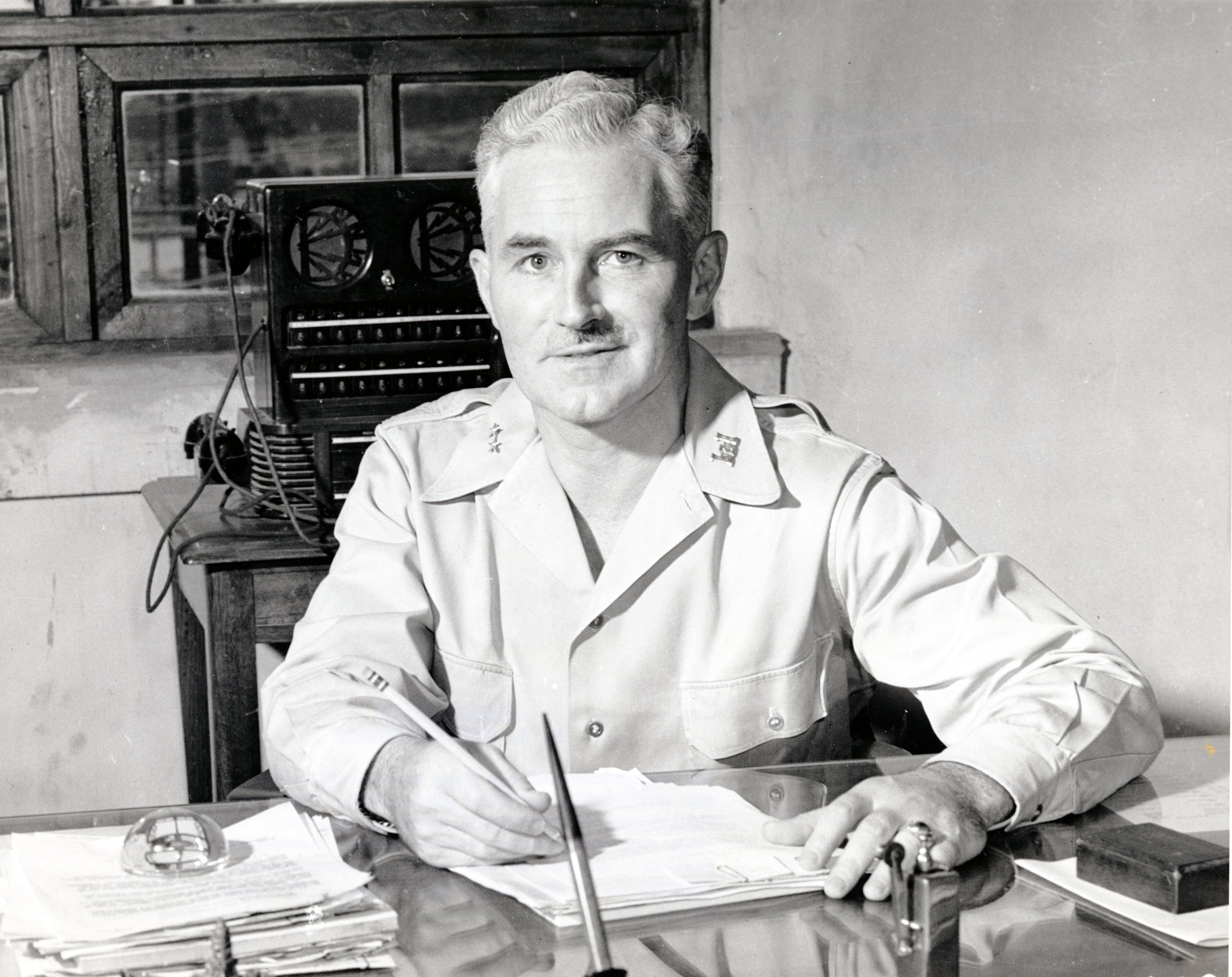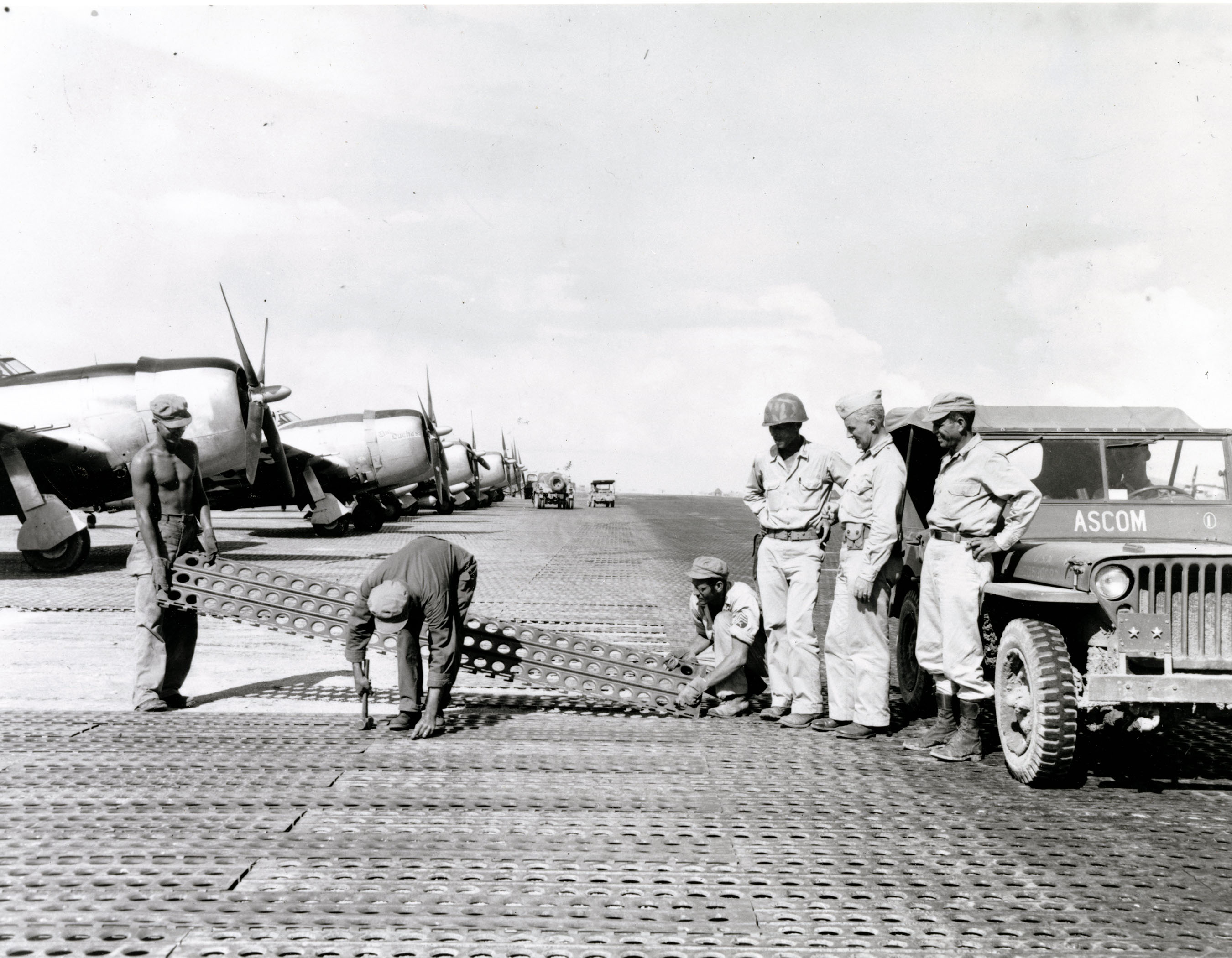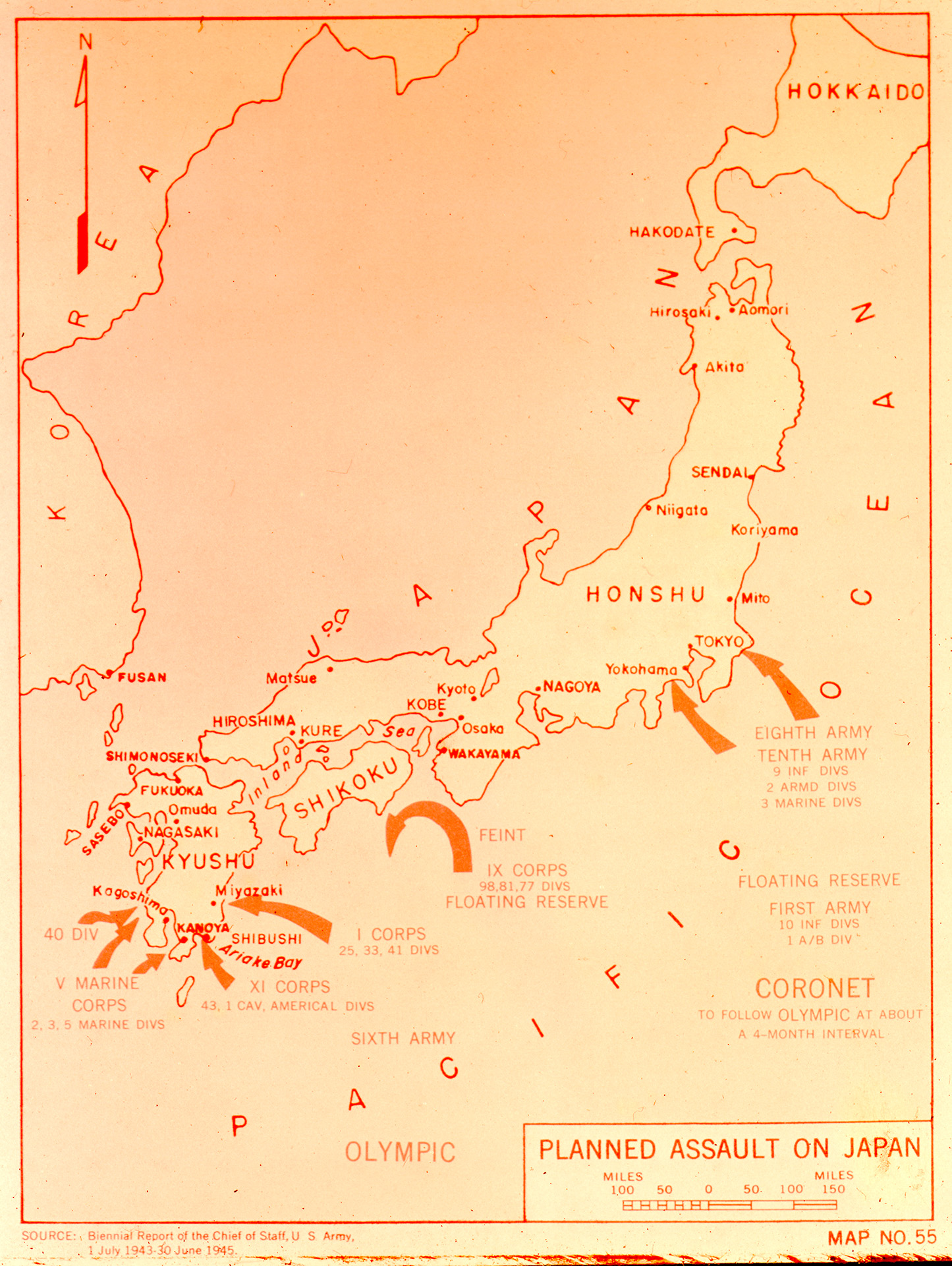Army Engineers Were a Critical Part of the Greatest Invasion that Never Was
Throughout the Pacific campaign of World War II, Allied military forces encountered ferocious resistance by entrenched Japanese troops defending territory far from their homeland. As the front lines moved closer to the main islands of Japan, the fervor of the Japanese only intensified, with each battle more bloody than the last. Indeed, American casualties in the last year of the Pacific War alone came to more than 200,000 soldiers. It appeared that the Japanese government would not surrender unconditionally and that for the first time in modern history Japan would have to be invaded.
As early as 1943, American military planners had foreseen the necessity to attack the two principal Japanese islands, centrally located Honshu and Kyushu to the south, in order to end the war. They expected stiff resistance, and some estimates of American casualties reached as high as one million. With full knowledge of the potential costs, the Joint Chiefs of Staff approved a directive on May 25, 1945, outlining the overall invasion of Japan. The operation, code named DOWNFALL, would consist of two phases. The invasion of Kyushu was termed OLYMPIC, while the assault on Honshu was known as CORONET. Estimates of the Allied force requirements for the entire operation were for some five million soldiers, all American (indeed 40 percent of all Americans in uniform) except for three British Empire divisions.
 |
| DOWNFALL: Plan for the Invasion of Japan, May 1945. Reports of General MacArthur, Volume 1, CMH Pub 13-3, Reprint 1994, 396. |
 |
Maj. Gen. Hugh J. Casey, Office of the Chief Engineer, at his desk in the City Hall Building, Manila, Luzon, Philippines, 31 July 1945.
Casey Papers, CEHO |
Planning for OLYMPIC
As planning for the invasion of Kyushu–OLYMPIC– progressed, the requirements grew exponentially. Eventually this operation would involve 3,000 naval vessels and 800,000 personnel with expected loss rates as high as 35 percent. To overcome tactical problems inherent in such a large operation, General Douglas MacArthur, newly appointed as commander-in-chief, U.S. Army Forces, Pacific, and Maj. Gen. Hugh J. Casey, his chief engineer, requested four additional engineer construction brigades in addition to those engineer troops already within the Southwest Pacific Command.
These engineers would provide combat and logistical support for OLYMPIC. No aerial photography was available for Kyushu, and the scarce maps and published data that were found did not accurately reference existing installations or sites for possible construction. As the terrain also made it difficult for amphibious operations, floating piers would have to be constructed and put into place. Most supplies would have to be transported into the operational area. Subsequent operations would necessitate that the engineers rapidly construct three bases on the island at Kagoshima, Shibushi, and Miyazaki. Additionally, to support 30 air groups, 11 runways would be needed, and most of these fields would have to be built from scratch. Engineers would have to construct storage for nearly 600,000 barrels of aviation gasoline, repair or build 500 miles of road, and develop large capacity port facilities. By necessity, engineers would have to comprise more than 21 percent of the entire assault force.
On June 20, MacArthur issued Operations Instruction No. 1 for OLYMPIC. The Sixth Army and the Pacific Fleet would carry out the invasion at three points in Kyushu seizing only a third of the island. Engineers then would proceed to repair damaged—and establish new—airstrips, naval bases, and supply depots in preparation for strikes on the Japanese industrial heartland. The launching date of this operation was set for November 1.
 |
|
 |
|
Construction of the critical Tanauan Airdrome, Leyte, Philippines, 16 December 1944. Men of the 1897th Engineer Aviation Battalion lay steel mat while commanding officer Col. James E. O'Keefe (left) and Maj. Gen. Hugh J. Casey (center) watch.
Casey Papers, CEHO.
|
|
The 96th Engineer Regiment constructs an artificial harbor at Port Moresby, New Guinea, 27 July 1943.
Casey Papers, CEHO. |
The Engineer Role in CORONET
While it was hoped that OLYMPIC would persuade the enemy to surrender, it likely would have to be followed by an even greater assault against the central core of Japan. The invasion of Honshu–CORONET–was targeted originally at Sagami Bay along Japan’s Pacific coast. Sixteen infantry, armor, airborne, and Marine Corps divisions would land and drive towards Tokyo, the capital city. Up to thirty additional divisions could be further deployed if significant and continuing Japanese resistance was encountered. Of the 1,069,040-soldier assault force in CORONET, fully 236,196 would be engineers. Their biggest challenge would be to quickly improve Honshu’s road network. Engineers also would construct airfields west of the Tokyo-Yokohama area.
 |
Map of Proposed Invasions of Japan.
Sturgis Papers, CEHO. |
Engineers played a key role in altering the plans for CORONET. From hydrographic charts, engineers determined that Sagami Bay would be too shallow for anything other than small landing craft, and suggested that only the capture of the port facilities at Tokyo and Yokohama would allow for an adequate level of logistical support for the entire operation. Thus, MacArthur did an about-face and instead approved a series of landings along the coast of the Kanto Plain east of Tokyo. U.S. troops would then attempt to cut off Tokyo before the monsoon season struck. This change actually meant the construction of extensive new facilities, including two artificial harbors as well as many more airfields. Additionally, engineers would have to build extensive storage capabilities, housing for half a million troops, and camps to shelter an equal number of prisoners, replacements, and repatriated civilians. CORONET would begin in March 1946.
At the successful conclusion of the invasion, engineers would be crucially involved in the planned occupation of Japan, an operation code named BLACKLIST. Engineers would rehabilitate existing facilities for immediate use and rely as much as possible upon local labor and materiel sources for other construction.
In the end, the termination of hostilities following the dropping of the atomic bombs on Hiroshima and Nagasaki and the Japanese surrender aboard the U.S.S. Missouri on September 2, 1945, meant that out of the entire DOWNFALL planning process only a small fraction of the non-combat engineering actions planned for the occupation were ultimately carried out. However, the important role accorded to engineer troops in this large-scale invasion plan underscored their already significant contribution towards ending the war and indicated the significant potential of engineer forces in future invasion planning.
* * *
Revised June 2020
September 2002